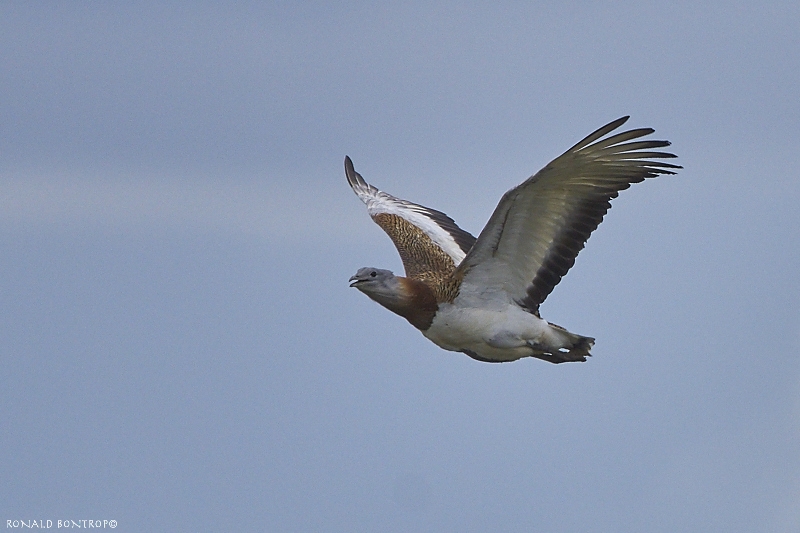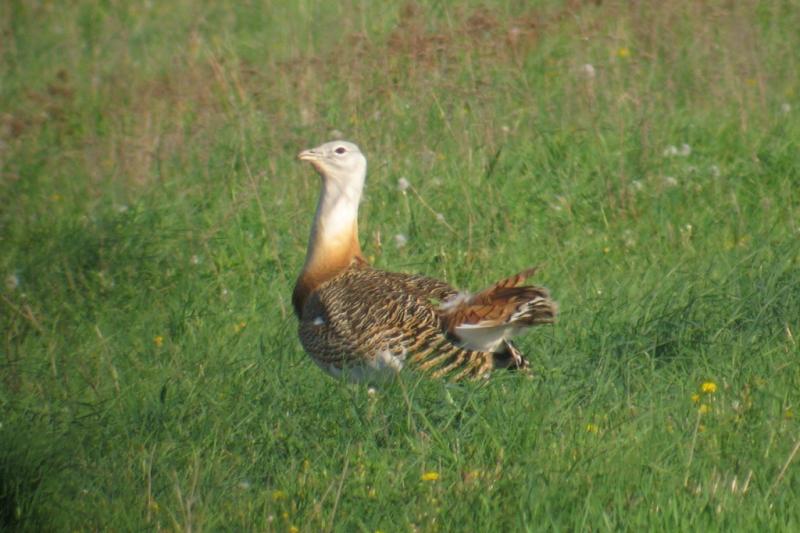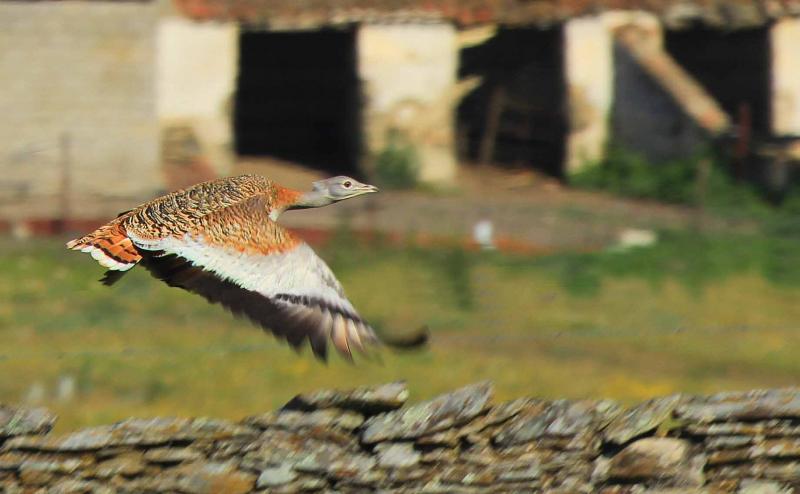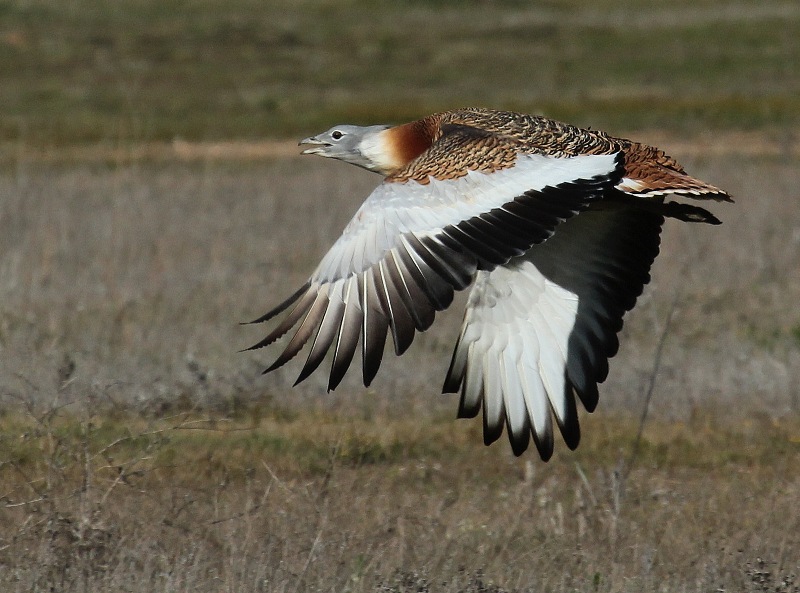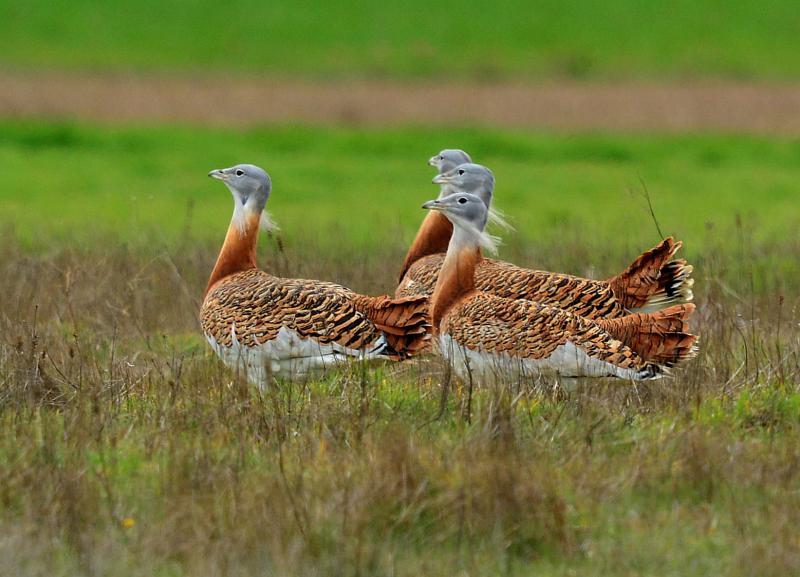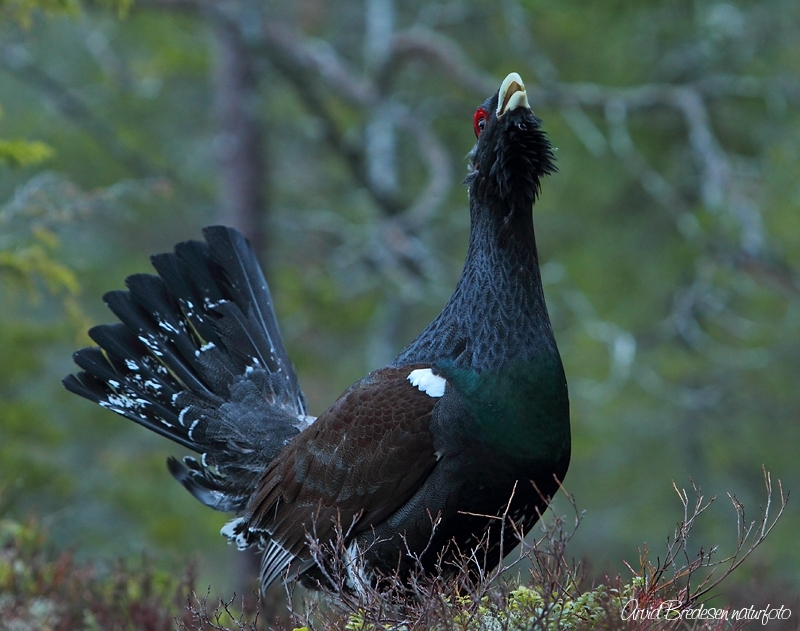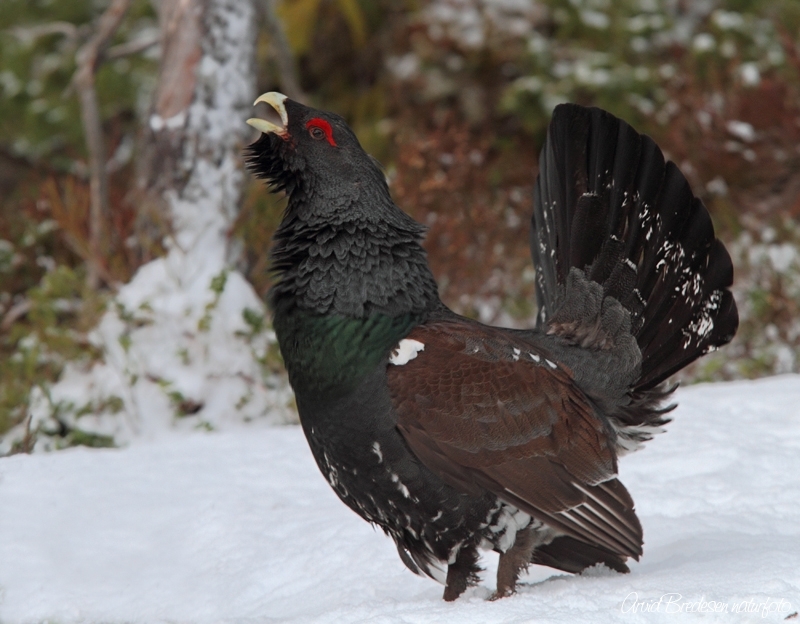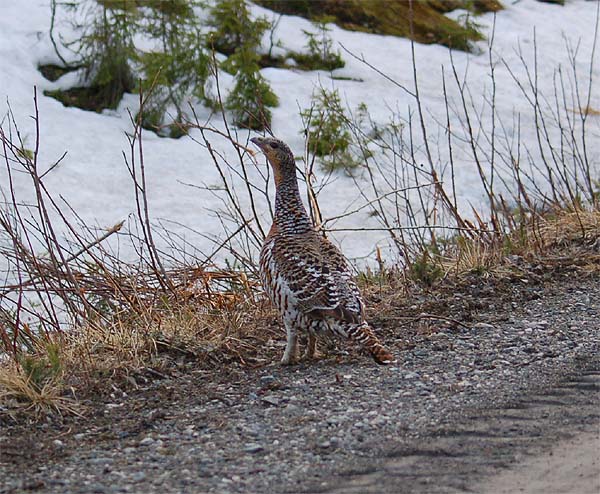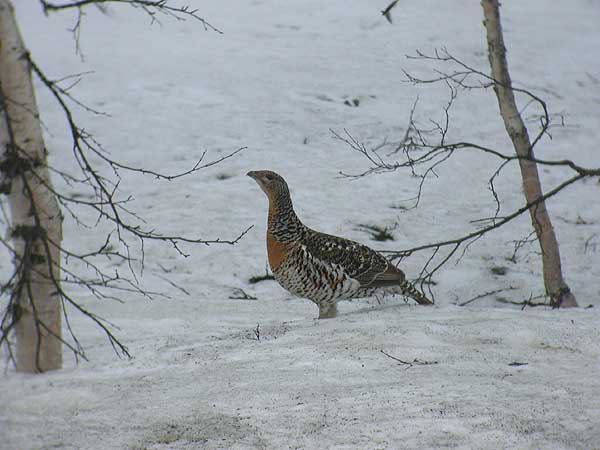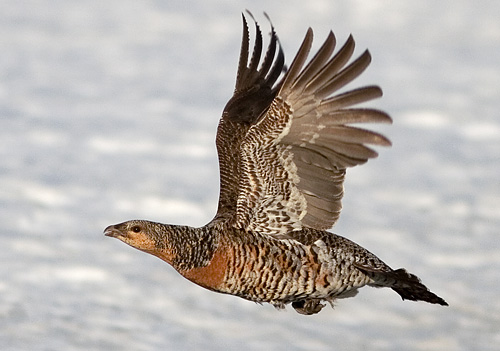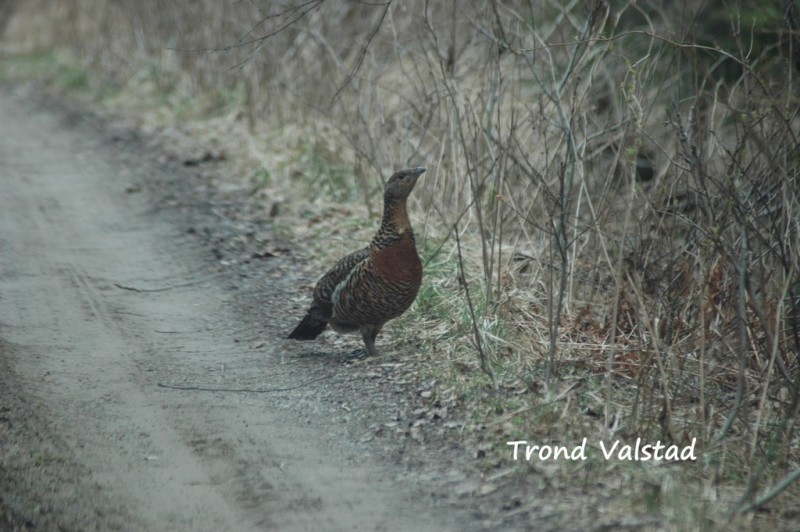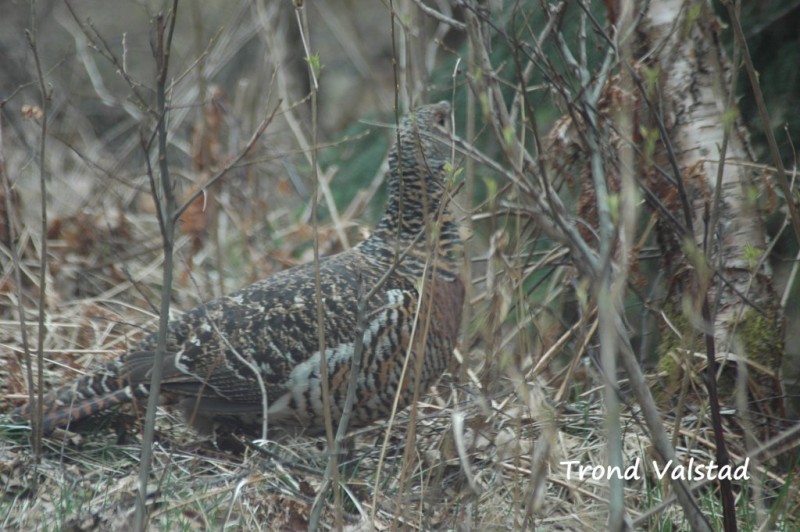Great Bustard (Otis tarda)
Capercaillie (Tetrao urogallus)
Heaviest bird in area. Stocky with well developed chest. Male 50% larger than female. Mostly unmistakable, and differs from all other bustards in area in all plumages by pale, grey head (yellowish grey in female), clearly paler than the rufous upperparts and lower neck. Male with thick neck, rufous chest and long moustache feathers. Female with more slender neck and duller colours. In flight the big white wing-patch is conspicuous. Base of hand pale with smooth transition to dark tips. Secondaries black. When displaying the male raises wings and body feathers to a "foam-bath" posture with head held low, like a white ball of feathers. Flight heavy but majestic. Shy and alert bird.
Sound:Mostly silent, especially away from breeding ground. Display call a short deep, hollow thud "omp", using resonating gular pouch. Most heard is a nasal grunt used in various types of excitement. Sometimes given in a flatulent series.
Excitement call:
Distribution:
Wikipedia: map (se also Xeno-canto below)
Ecology:Birdlife ecology
Links:
Observation.org Latest observations
Image search Flickr NB! May give other species
CCCC-photo:cruzperezmanuel, Licence,Link.
CC-photo:Viskens Michel, Licence,Link.
CC-photo:Paul Dirksen, Licence,Link.
Very large and heavy bird with heavy bill and rounded tail with straight outer tail-feathers. Both sexes lack wing-bars. Males much bigger than females. Plumage mostly black with brown wings and yellowish bill. Females mottled brown with brick-red breast, throat and chin. Lower back greyish, contrasting with rufous, heavily barred, tail.
Sound:Display-sounds from male unmistakable. Four phased song: First a slow introductory, double-tapping phase which suddenly bursts into an accelerating crescendo followed by a distinct pop. Then closing with grinding and hissing sounds. Female calls with a deep nasal "kok kok".
Song/display:
Distribution:
Wikipedia: map (se also Xeno-canto below)
Ecology:Birdlife ecology
Links:
Observation.org Latest observations
Image search Flickr NB! May give other species
CC
 English
English Albanian
Albanian
 Armenian
Armenian
 Bulgarian
Bulgarian
 Catalan
Catalan
 Croatian
Croatian
 Czech
Czech
 Danish
Danish
 Dutch
Dutch
 Finnish
Finnish
 French
French
 Georgian
Georgian
 German
German
 Greek
Greek
 Hungarian
Hungarian
 Italian
Italian
 Latvian
Latvian
 Lithuanian
Lithuanian
 Macedonian
Macedonian
 Norwegian
Norwegian
 Polish
Polish
 Portuguese
Portuguese
 Romanian
Romanian
 Russian
Russian
 Sami : Lule sami
Sami : Lule sami
 Sami : North sami
Sami : North sami
 Sami : South sami
Sami : South sami
 Scientific names
Scientific names
 Serbian
Serbian
 Spanish
Spanish
 Swedish
Swedish
 Ukrainian
Ukrainian


